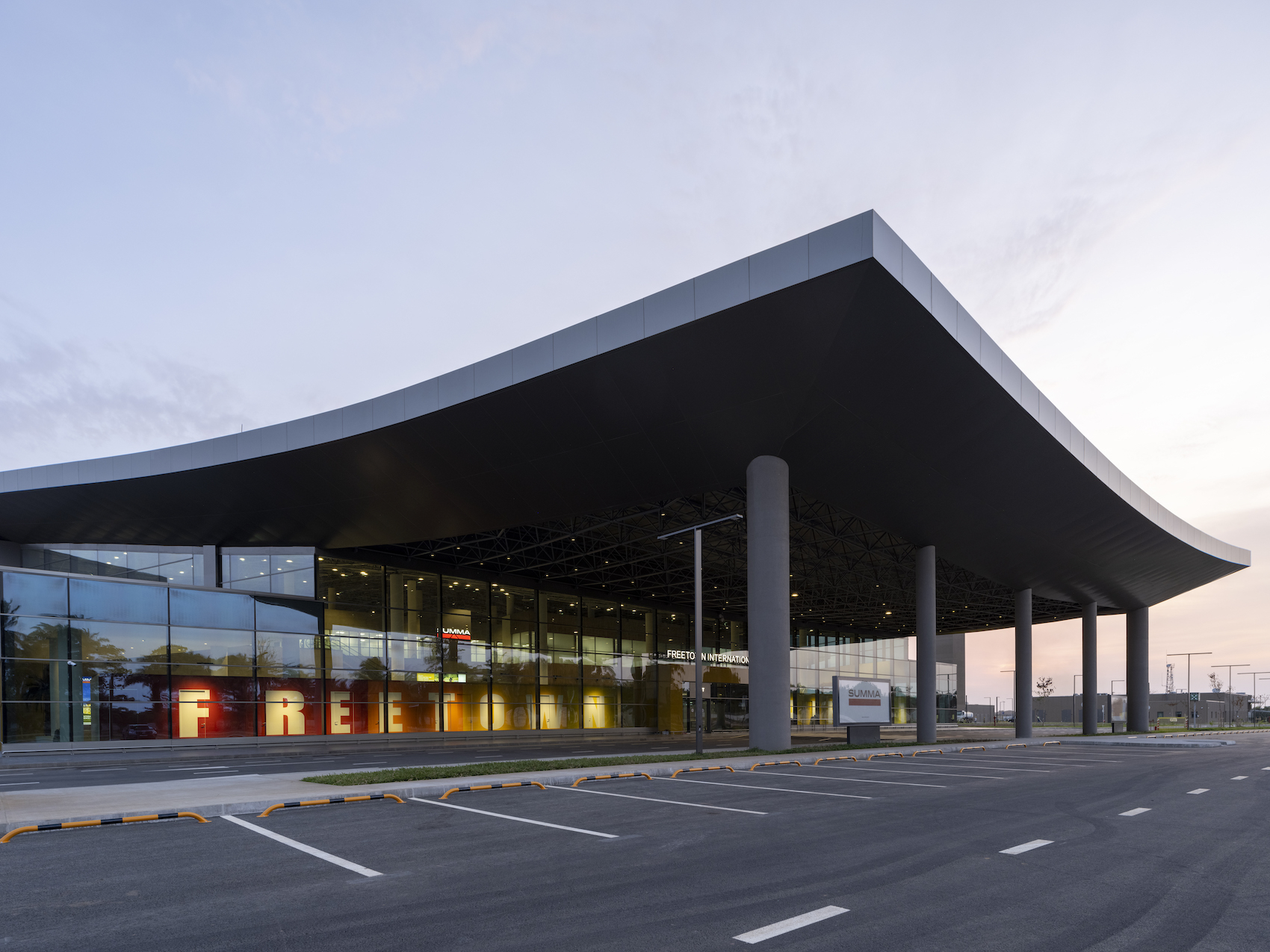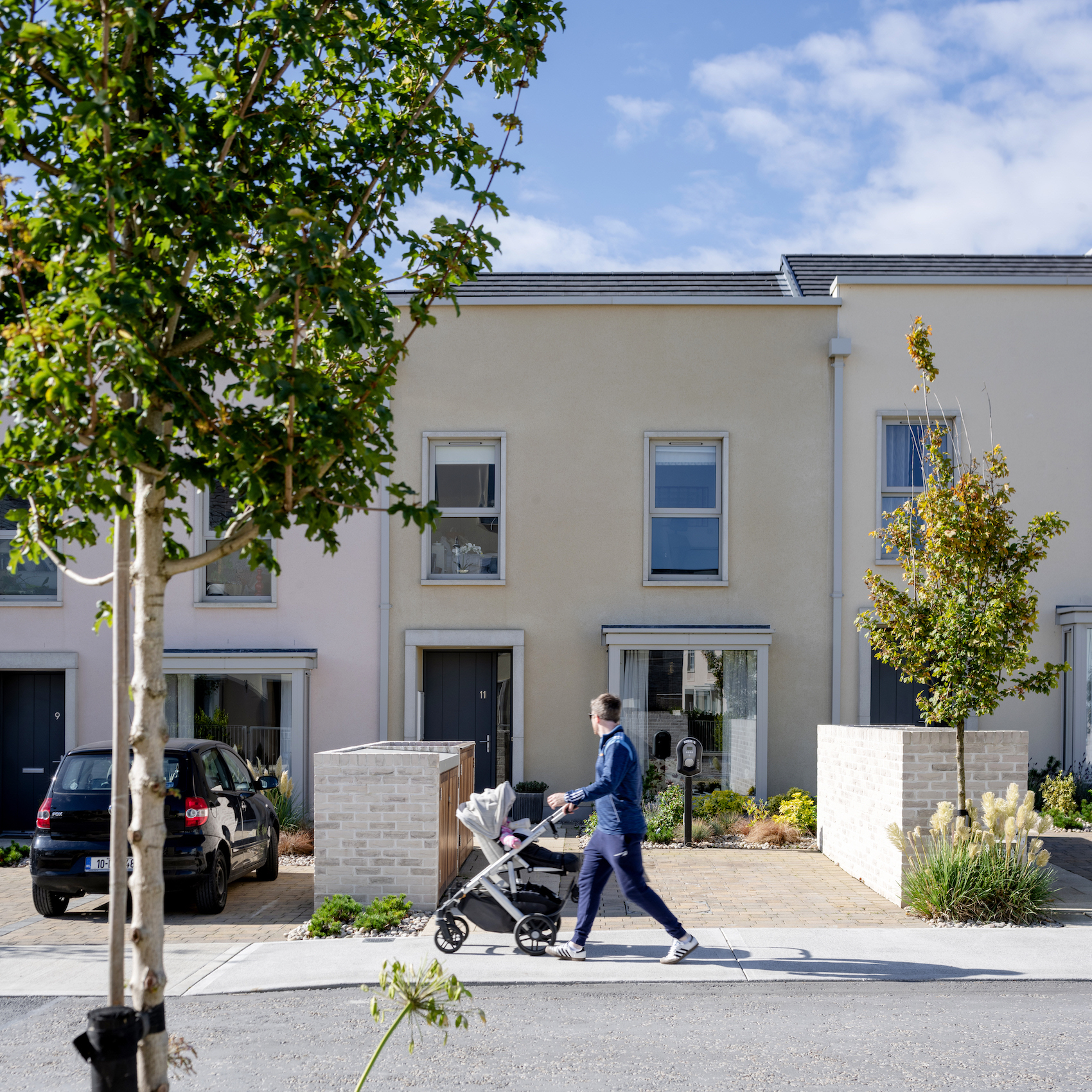Ben Hancock, Managing Director of Oscar Acoustics, answers readers’ questions on how acoustic solutions can support health, productivity, and inclusivity in the post-pandemic office.
SonaSpray fc (white) in a private office, and SonaSpray K-13 Special (light grey) throughout main office (for a sprayed concrete look) at the Oscar Innovation Centre – Oscar Acoustics’ HQ and product showroom in Kent (photo: Antonia Stuart).
Your recent whitepaper, ‘Shaping Future-Ready Work Spaces for The Great Return to the Office’, suggests that acoustic design is now seen as a vital component towards improvement in workplace performance and employee retention. So why does sound management continue to take a back seat on so many projects?
Despite the overwhelming evidence of its importance, acoustics is often treated as an afterthought rather than a key principle of good workplace design. Our 2025 survey found 56 per cent of corporate UK workers find their office noisy, a figure that has barely shifted from 59 per cent in 2019. This impacts productivity, with 47 per cent struggling to concentrate, 36 per cent feeling irritated, and 30 per cent reporting stress.
The consequences of this neglect are significant: 36 per cent of employees work from home specifically to escape office noise, while headphone use has nearly doubled from 23 per cent in 2022 to 41 per cent today, effectively creating isolation bubbles that stifle collaboration. Yet only three per cent of companies are actively redesigning their spaces to address these issues.
I believe this disconnect stems from a lack of awareness among decision makers who rarely experience these environments firsthand. When project budgets tighten, acoustic treatments are often first to go, despite their outsized impact on workplace performance. This short-term thinking goes against our finding that two-thirds of workers aged 25-34 would consider quitting if forced to return to the office fulltime; making acoustic comfort a genuine retention issue.
What common acoustic challenges do you see in post-pandemic offices, and how should architects and developers address them?
Employees now average 3.1 days in the office, yet our research says only 29 per cent believe their office acoustics meet their needs. Office spaces need to up their game, justifying the commute by offering attractive working environments that have an edge over home working.
Open-plan layouts remain problematic, with background conversations and video calls often cancelling concentration. Then, when teams do get together, this can create a paradox where collaboration is undermined by poor acoustics. Architects should address this by designing with acoustic comfort from the start. This means incorporating sound-absorbing materials early-on, creating varied acoustic zones, and understanding that different activities need their own acoustics.
Developers need to understand that premium acoustic solutions directly impact property values. In my experience, buildings with excellent acoustic design have notably lower vacancy rates and command higher rents.
How can acoustic solutions support neurodivergent employees, and what should designers keep in mind when creating inclusive spaces?
This is increasingly important, with over 15 per cent of the UK population being neurodiverse. Our research shows these individuals are disproportionately affected by poor acoustics. 71 per cent of those with dyspraxia, 67 per cent with ADHD, 66 per cent with dyslexia and 62 per cent with autism report their workplace as noisy; directly impacting their work.
Designers should implement ‘acoustic zoning’ with designated quiet areas alongside collaborative spaces. Advanced sound-absorbing finishes reduce reverberation, while easily accessible ‘retreats’ provide respite from overwhelming environments.
By definition, inclusive workplaces require acoustic comfort. One-size-fits-all is no longer viable; 25-26 per cent of employees with ADHD and dyspraxia report that quieter working areas would significantly improve their productivity.
How should acoustic zoning be approached to balance collaboration with quiet, focused work?
Effective acoustic zoning is central to what is called ‘The Flourish Model’; a multi-sensory approach to workplace design that balances environment, emotion and economics. Rather than treating the office as a standardised workspace, designers should create a variety of acoustic environments that support diverse activities and working styles.
This means providing quiet zones for deep focus, collaborative areas for teams, and transitional spaces that bridge the two. The key is to provide choice and natural flow; employees should be able to choose a suitable acoustic environment for their current task.
Importantly, acoustic treatments should be integrated throughout, not only in quiet zones. Collaborative spaces can especially benefit from sound absorption that curbs excessive noise and prevents noise reverberation from reaching uncomfortable levels.
What makes spray-applied acoustic treatments a preferable option in workplace fit-outs and retrofits?
For modern workplaces, spray-applied solutions like our SonaSpray range offer a number of advantages. Unlike traditional acoustic panels, they can be applied to virtually any surface; walls, ceilings, curved areas, providing seamless coverage that complements any design aesthetic.
Spray-applied treatments absorb sound energy rather than reflecting it, reducing reverberation time and creating more comfortable acoustic environments. This is critical for spaces that need to support both collaboration and focus.
They’re particularly helpful in retrofit projects where acoustics were initially overlooked. The application process is relatively quick and non-disruptive, allowing businesses to rapidly improve their acoustic environment.
Can good acoustic design support an organisation’s ESG goals, and if so, how?
Absolutely. Acoustic design directly contributes to the social element of ESG through its impact on employee wellbeing and inclusivity. By creating environments that reduce stress, organisations show a commitment to workforce health beyond basic compliance. Many acoustic solutions now incorporate sustainable materials. For instance, our SonaSpray products use recycled paper as their base material, contributing to circular economy principles.
What should architects look for when evaluating the quality and performance of acoustic finishes?
Beyond the obvious acoustic performance metrics like absorption coefficients, architects should consider several factors. Durability is paramount; acoustic treatments should maintain their performance over time without degradation. Fire safety is non-negotiable, with treatments needing to meet or exceed relevant standards.
Sustainability credentials are increasingly important; look for products with recycled content, low VOC emissions, and transparent environmental product declarations. Aesthetics matter too; the best acoustic solutions should complement a designer’s vision.
Finally, consider the holistic impact. Acoustic treatments that contribute to wellbeing factors, such as improved air quality, deliver greater overall value. The goal should be to create spaces that sound as good as they look, supporting both employee wellbeing and office productivity.
For further information, please visit the Oscar Acoustics website.














